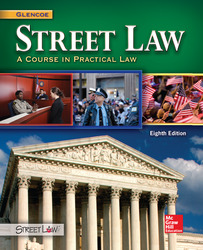
Street Law: A Course in Practical LawChapter 15: Criminal Justice Process: Sentencing and CorrectionsChapter OverviewsThe final stage of the criminal justice system begins with the sentencing of a guilty defendant by either a judge or a jury. The sentence is a critical decision in the criminal justice process because it can determine the defendant's fate for years or even for life. Sentencing Options Most criminal statutes set out basic guidelines for sentencing, but judges generally have considerable say in determining the appropriate sentence for a defendant. Judges may have several options for sentencing. These options include suspending the sentence—or allowing the defendant to serve the sentence at a later time; releasing the defendant to the supervision of a probation officer; and sentencing the defendant to serve his or her time at home. A judge may also issue a fine, require the defendant to pay back the victim for harm caused, or allow the defendant to work in the community during the day but return to prison at night or on weekends. The most severe sentences a judge may impose are imprisonment and death. Purposes of Punishment There are four general reasons given for punishing convicted defendants—retribution, deterrence, rehabilitation, and incapacitation. Retribution is the idea that punishment should involve some form of payback ("an eye for an eye"). Deterrence is the concept that punishment will discourage others from engaging in future criminal activities. Rehabilitation is the idea that time in prison will allow the prisoner to change his or her ways and learn how to function as a productive member of society. Incapacitation removes the individual from society in order to make the community safe from the threat he or she posed. Parole Parole is the release of a convicted person from prison before his or her entire sentence has been served. Parole is a privilege that may be granted to those convicts who seem to have reformed and appear ready to rejoin society. Capital Punishment Capital punishment, also known as the death penalty, is a highly controversial topic. The U.S. Supreme Court has upheld the constitutionality of capital punishment under certain circumstances. Corrections There are several treatment and punishment options available to the government, including halfway houses, mental facilities, and prisons. Some aspects of the correctional system also focus on preparing the prisoner to re-enter society. |  |















